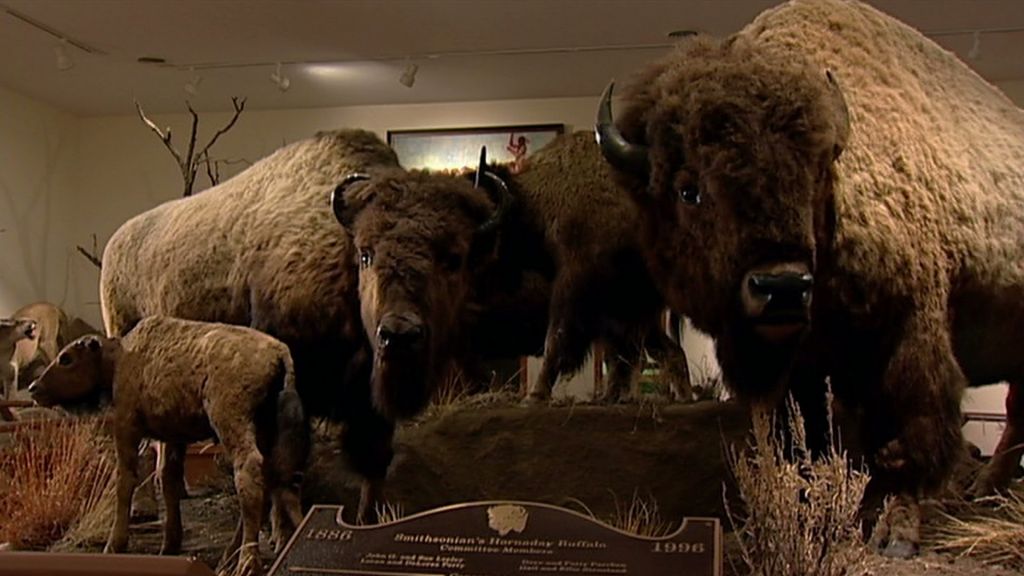Montana filmmaker Doug Hawes-Davis lives in a place where at one time, bison outnumbered people by more than two to one. Now the embattled animal — a common symbol of the American West — is clinging to its last vestiges of wildness, as cattle ranching, hunting, and habitat loss threaten once again to bring it to the brink of extinction. Hawes-Davis’s film Facing the Storm: Story of the American Bison premieres on Independent Lens on Thursday, April 26, 2012 (check local listings).
https://youtube.com/watch?v=e0FFtKT3HcY
What impact do you hope your film will have?
The film deals with a part of American history that is not well known. I’d like that history to become more common knowledge. Understanding our past and current relationship with bison – the most iconic of all native North American wildlife – I hope will help us improve that relationship in the future.
What led you to make Facing the Storm?
Bison are the most iconic of all native North American wildlife. In many ways, the image of bison represents the wild and the American wilderness. Yet, they are the only animal that is not allowed to be wild essentially anywhere in our country. That root of that irony is of great interest to me.
What were some of the challenges you faced in making this film?
It’s a big subject to fit into a one-hour TV documentary, so it was challenging to figure out which stories to tell. No matter what approach I took, there were going to be great stories about the human relationship with bison that would be left out.
https://youtube.com/watch?v=Ceszig4cZ7c
How did you gain the trust of the subjects in your film?
If a filmmaker has a genuine interest in the stories people have to tell, in most cases they will be willing to tell them. So, expressing sincere interest in everyone’s perspective that we would present in the film was the simplest path to gain their trust and getting our subjects to participate.
What would you have liked to include in Facing the Storm that didn’t make the cut?
There are literally dozens of great stories we could not include. A few come to mind. The creation of the National Bison Range in Montana and how Salish people in Montana were instrumental in bringing wild bison to the national refuge is a great story. Northern Mexico is home to a herd of truly wild bison and they are highly regarded on the Mexican side of the border, but considered a nuisance to some degree when they cross into the U.S. That would have been a good story to include or investigate further. On a fairly regular basis the Inter-Tribal Bison Cooperative (ITBC) is successful at helping establish a new herd of bison in Indian Country. We would really have liked to film the creation of one of these new herds, but the timing was never right.
Tell us about a scene in the film that especially moved or resonated with you.
I think one of my favorite scenes is the William T. Hornaday story, in large part because Dan Flores is such a great storyteller himself. Between Flores, Montana historian David Parchen, the music of Ivan Rosenberg and Mike Grigoni, and Andy Smetanka’s animation, the scene really takes you to the place in time when the great wildlife conservationists of the day were faced with the likelihood that bison would be completely wiped off the face of the earth.
What has the audience response been so far?
The response has been great at every screening I’ve been to. People from all over the U.S. seem to connect with the film and the struggle of bison to be themselves.
The independent film business is tough. What keeps you motivated?
I’ve been making documentaries since 1992. Despite the difficulties, I have never really considered anything else as a primary occupation. It’s just so empowering to share these stories that I find important and interesting.
Why did you choose to present your film on public television?
Frankly, PBS is one of only a couple outlets on U.S. television where independent filmmakers can be true to their artistic vision and tell stories like the one that is central in Facing the Storm: Story of the American Bison.
What are your three favorite films?
It’s pretty hard to narrow this to three, but they would definitely all be docs, and these three come to mind immediately – American Movie, Hoop Dreams, and Vernon, Florida (all the films of Errol Morris, really). A couple of others – Bones of the Forest, In the Reign of Twilight, A Perfect Candidate, Anvil: The Story of Anvil, End of an Old Song, Crumb, and Year of the Horse.
What advice do you have for aspiring filmmakers?
Stick with it. It’s not necessarily an easy endeavor, but it will get easier and while it may not be financially rewarding, it will always be rewarding nonetheless. I can pretty much guarantee that.
What do you recommend for sustenance while making an independent film?
Coffee and beer. Alternate in approximately 12-hour intervals.
